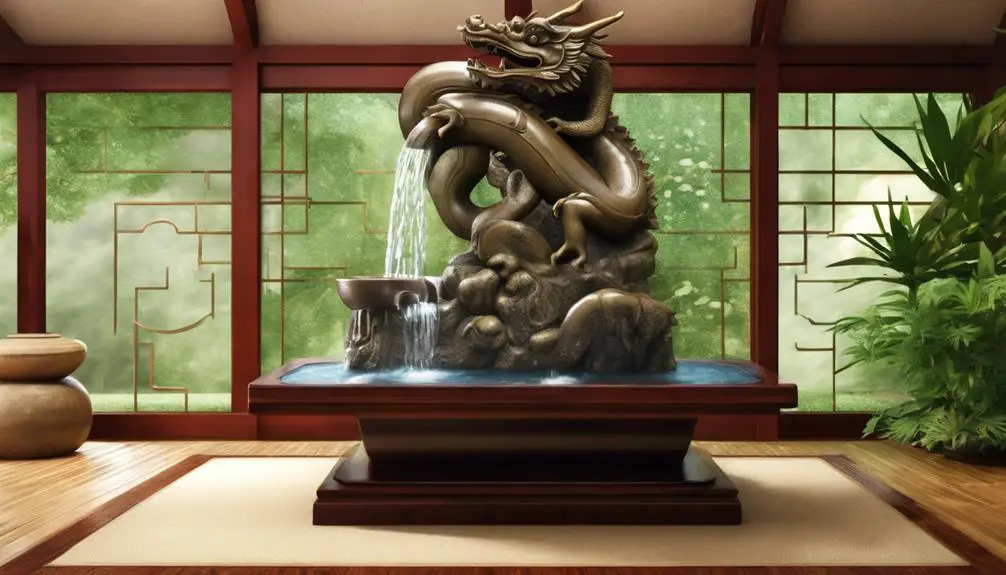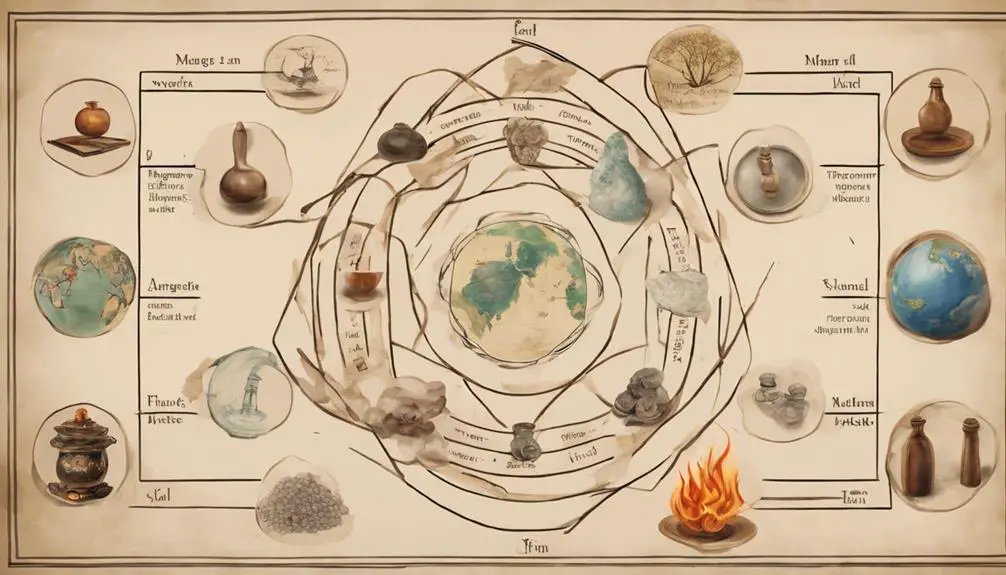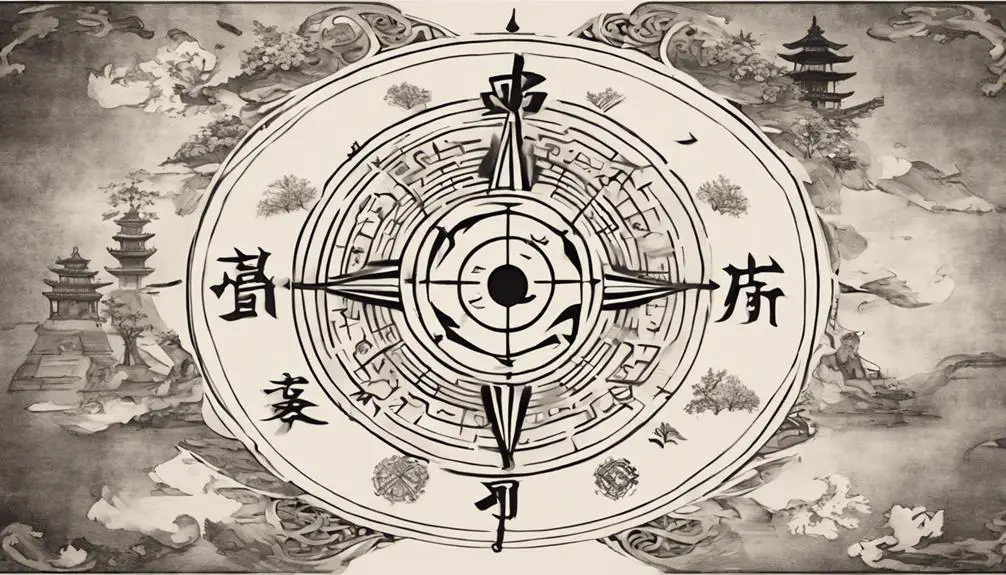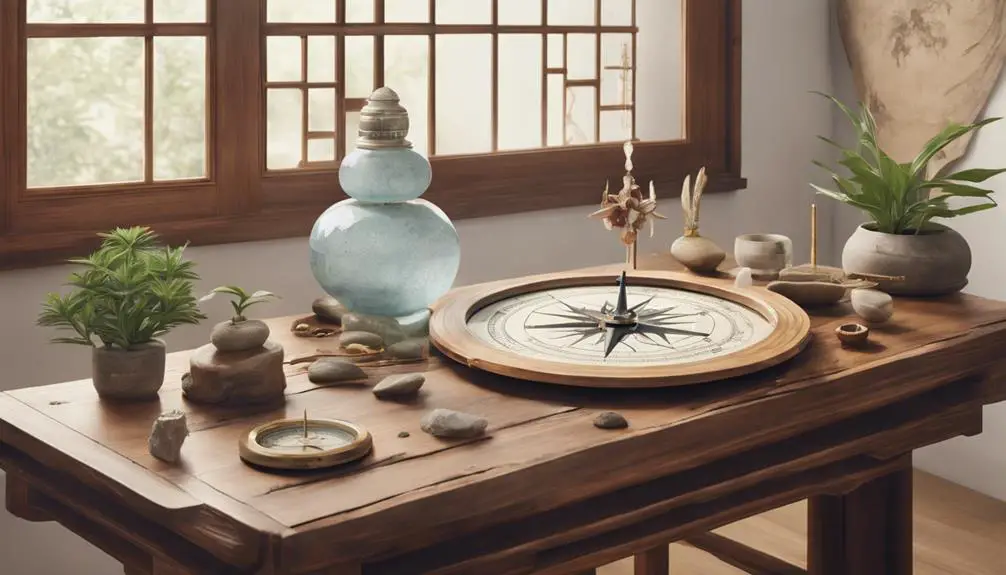Ancient yet transformative, Classical Feng Shui unlocks the dormant potential of your environment, promising a harmonized life filled with health, wealth, and success.

Classical Feng Shui
While you might think Classical Feng Shui is all about decor and furniture placement, it's actually a complex ancient Chinese system deeply rooted in understanding the flow of energy in our environment. It's not about superstition, but about harnessing natural energies to improve your life.
Can you imagine a life where your living and working spaces are harmonized to bring you health, wealth, and success? Let's embark on this journey together and explore how you can optimize your surroundings to your advantage.
Are you ready to unlock the potential lying dormant in your own environment?
Key Takeaways
- Classical Feng Shui emphasizes harmony and balance in living spaces, achieved through aligning with natural world elements and directions.
- Understanding the Five Elements theory and their interactions is crucial for enhancing energy flow and creating a harmonious environment.
- Yin and Yang symbolism in Feng Shui represents the harmony of passive and active energies, essential for creating balance in surroundings.
- Applying Feng Shui principles at home involves strategic object placement, understanding color significance, and harnessing Qi for health, wealth, and happiness.
Understanding the Basics of Classical Feng Shui

Often, you'll find that understanding the basics of Classical Feng Shui involves recognizing the importance of harmony and balance in your living or workspace. It's not just about decor or layout, it's about tapping into the energies of the universe and channeling them to your advantage.
Central to this ancient practice are the compass directions and Feng Shui symbols. These aren't just random elements but thoughtfully integrated parts of the Feng Shui system designed to align your environment with the natural world. The compass, or 'Lo Pan', is a vital tool used to determine the energetic qualities of a space.
Each of the eight compass directions corresponds to a different aspect of life, such as wealth, relationships, or career. For instance, North is linked to career prospects, while Southwest relates to love and marriage. Aligning your space according to these directions can invite positive energies and opportunities.
Feng Shui symbols, on the other hand, are physical manifestations of these energies. They're not just decorative pieces but powerful conduits that attract or repel specific energies. Understanding and using them correctly can amplify your intentions, creating a harmonious and prosperous environment.
Mastering these basics will set you on the path of harnessing the power of Classical Feng Shui.
The Five Elements in Feng Shui

Another crucial component of Classical Feng Shui is understanding the Five Elements theory, which holds a significant influence over the balance and harmony of your environment. Essentially, these elements are Wood, Fire, Earth, Metal, and Water. Elemental Interactions and Elemental Symbolism are key to this theory.
Elemental Interactions involve the 'productive' and 'destructive' cycles. In the productive cycle, each element nourishes the next. For instance, Water nourishes Wood. However, in a destructive cycle, each element controls another. For example, Wood controls Earth.
Elemental Symbolism, on the other hand, is all about the attributes of each element. These elements are associated with certain qualities, colors, seasons, and directions.
Here's a brief table to illustrate this:
| Element | Symbolic Attributes |
|---|---|
| Wood | Growth, Spring, East |
| Fire | Dynamism, Summer, South |
| Earth | Stability, Late Summer, Center |
| Metal | Rigidity, Autumn, West |
| Water | Flow, Winter, North |
Understanding these aspects is vital to creating a harmonious environment as per Feng Shui. By respecting the interactions and symbols of these elements, you can enhance the energy flow in your space.
Yin and Yang: The Balance of Energies

Delving into the concept of Yin and Yang, you'll find it's integral to maintaining the balance of energies in Feng Shui. Yin Yang Symbolism represents the dualistic harmony in the universe, visualized as two swirling halves, black and white, within a circle. Each half contains a smaller circle of the opposite color, signifying the interconnectedness and interdependence of these energies.
Yin, symbolized by the black half, embodies the passive, receptive, and feminine energies, while Yang, represented by the white half, conveys active, penetrating, and masculine energies. But remember, Yin and Yang aren't opposing forces. They're complementary, each containing a seed of the other, illustrating the dynamic nature of life.
Achieving a balance of Yin and Yang in your surroundings is a fundamental principle of Feng Shui. This balance fosters a sense of stability and peace, as they're mutually supportive and keep each other in check. For example, a room with too much Yang might feel overstimulating, needing some Yin elements to calm it down. In contrast, an overly Yin space might feel lethargic, requiring Yang's active energy to vitalize it. Understanding this balance helps you create a more harmonious environment.
The Role of Qi in Feng Shui

In addition to balancing Yin and Yang, understanding and harnessing the power of Qi, or life force, is a critical aspect of Feng Shui. The concept of Qi Energy Flow is central to Feng Shui practice. Qi is the invisible energy that binds and flows through all living things. It's believed that when the Qi in your environment is balanced and flowing freely, it has a positive effect on your own personal Qi, promoting health, wealth, and happiness.
Mastering Qi Visualization Techniques can help you better understand the movement and influence of Qi in your surroundings. These techniques involve visualizing the Qi as a stream of energy, flowing through and around objects. It's also essential to understand that Qi isn't a static force. It's constantly moving and changing, influenced by the changing environment and the objects within it.
Applying Classical Feng Shui Principles at Home

To effectively apply classical Feng Shui principles within your home, you'll need to consider the layout, orientation, and the overall energy flow of your living space. This includes understanding the significance of color and strategic room placement.
Color significance in Feng Shui is crucial. Each hue represents a unique element: red for fire, green for wood, white for metal, blue or black for water, and yellow or brown for earth. These colors, when used appropriately, can enhance the energy flow and create a harmonious environment. If your living room faces south, for example, incorporating red elements can stimulate conversation and activity.
Room placement also plays a fundamental role. Consider the commanding position, a vital element of Feng Shui. This is the spot in a room that's farthest from the door, yet still allows a clear line of sight to it. Your bed, desk, and stove should ideally occupy this position for optimal energy flow and balance.
Frequently Asked Questions
How Long Has Classical Feng Shui Been Practiced in Chinese Culture?
You're asking about the practice's longevity in Chinese culture. It's been around for about 3,000 years, tracing back to the Zhou Dynasty.
The benefits of this practice are numerous, such as promoting harmony, balance, and positivity. Its origins, deeply rooted in Chinese cosmology, make it a fascinating study.
You're not only delving into an ancient practice but also exploring a system that's been influencing life aspects for millennia.
Can Classical Feng Shui Be Used in the Design of Outdoor Spaces, Like Gardens or Patios?
Absolutely, you can use Feng Shui principles while designing outdoor spaces. By arranging Feng Shui materials and balancing elements, you'll create a harmonious flow of energy.
Consider the placement of plants, water features, or outdoor furnishings. It's about achieving a sense of balance and tranquility.
Remember, it's not just about the physical arrangements, but also about creating a positive energy flow.
Are There Any Potential Negative Effects of Implementing Classical Feng Shui Incorrectly?
Yes, there can be negative effects if you implement things incorrectly. Misconceptions about the practice can lead to poor decision-making and unsatisfactory results.
The consequences of incorrect placement can disrupt harmony and balance, potentially creating stress or conflict. For example, you may experience a decrease in productivity or a sense of restlessness.
It's important to thoroughly understand the principles before applying them to avoid these potential pitfalls.
Does the Application of Classical Feng Shui Principles Differ Based on Geographical Location or Cultural Context?
Yes, the application of principles can vary based on location and cultural context. Feng Shui's origins lie in China, but it's been adapted worldwide. You'll find regional differences in interpretation and application. It's not a one-size-fits-all practice.
Each culture tailors it to their unique environment and beliefs. It's crucial to respect local customs and environmental conditions when applying these principles. This flexibility is part of its enduring appeal.
How Does Classical Feng Shui Differ From Other Types of Feng Shui?
In comparing various types of Feng Shui, you'll find that Classical Feng Shui benefits from its time-tested, scientific approach. It's based on calculations and observations of natural phenomena.
Other types, sometimes misunderstood, may focus more on modern aesthetics and personal preference. Unfortunately, this can lead to Feng Shui misconceptions. So, while all types aim for harmony, their methods can differ greatly.
Understanding these differences is key to effectively using Feng Shui.
Conclusion
In conclusion, understanding the core principles of classical Feng Shui – the Five Elements, Yin and Yang, and Qi – can transform your space into a harmonious haven. It's not just about aesthetics, but balancing energies to promote well-being.
As you apply these principles at home, remember that balance is key. Be thoughtful, detailed and patient. After all, mastering Feng Shui is a journey, not a destination. Its benefits are truly immeasurable and can bring about profound changes in your life.



Sign up